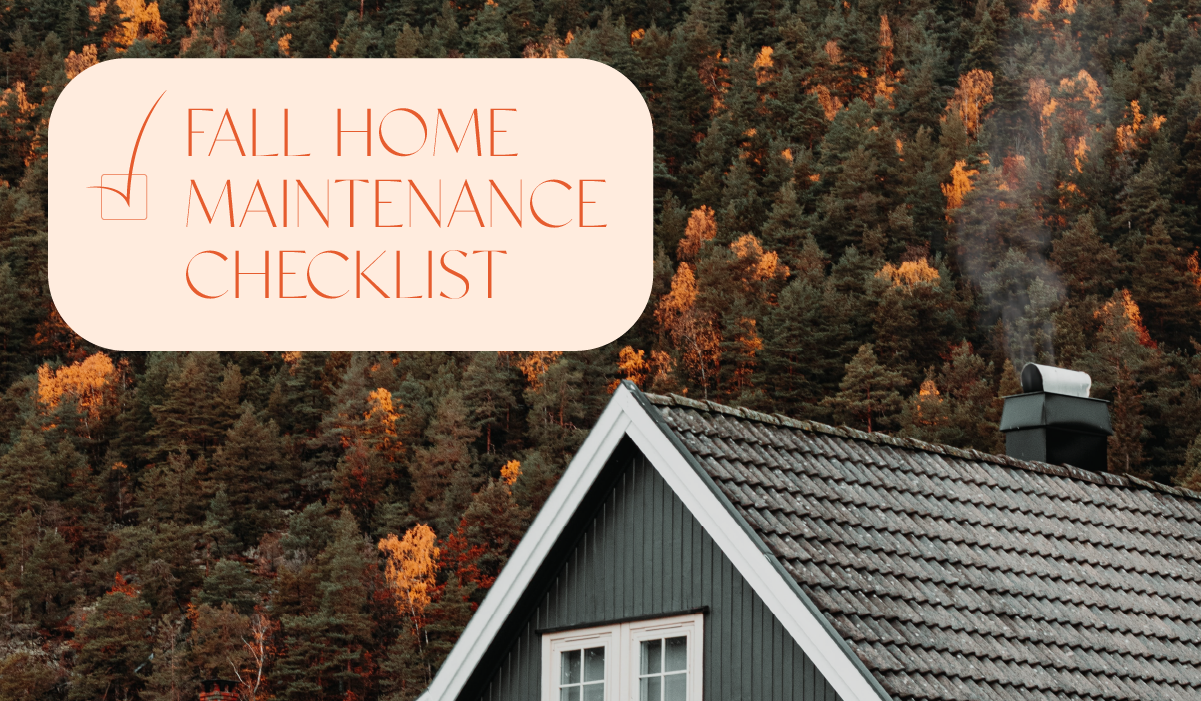Fall Cleaning | Home Maintenance Series
A good home operates with the seasons, coming to life in the spring and settling down for the cold months. As the leaves begin to turn and the days cool, it’s time to wind your house down for the fall. Luckily, autumn does not necessarily deliver a giant to-do list. Plan for your home's seasonal maintenance with our guide below!
Your Grounds
Garden. You may be weary of gardening by early fall, but it is a great season to plant perennials, like peonies, columbine or hydrangea. Fall is also a good time to plant trees and shrubs and reseed your lawn. Be sure to give new plants plenty of water before they go dormant, and by spring you may get a first bloom, depending on the variety. Plant bulbs such as tulips, daffodils and hyacinth anytime before the ground freezes. Those hours spent digging little holes and burying bulbs will be well worth your sore knees when they bloom in all their glory in early spring.
Raking leaves.
If fall could be summed up in a word, it would be “leaves.” Once the leaves start falling, the season of raking begins. Aside from annoying your neighbors, a thick bed of leaves atop your grass could smother your lawn and lead to mold growth. But do you need to scorch the earth clean of any remnants of leaves? No. A light layer of leaves under your shrubs and trees will provide a natural mulch, protecting the roots over the winter and providing refuge for insects and wildlife. If you plan to rake and bag the rest, enlist the kids to help, luring them with a chance to jump on the pile when they’re done.
Outside Your Home
Gutters. Once the leaves fall, call your gutter company to get those gutters cleaned and inspected. Any repairs that need to be done on the gutters or downspouts should happen before winter sets in. Your workers should also inspect the roof for any loose or broken tiles. Schedule the job before you get a heavy snow, which could leave frozen leaves and debris in the gutters.
Firewood. If you plan to use your fireplace this winter, stock up on seasoned firewood in the fall. Stack it on pallets, so it does not sit on the moist ground. Don’t pack the wood to tightly, or fungus could grow. Cover the wood with plastic sheeting, making sure it does not touch the ground, either. Wood can be stored in an unheated garage, but don’t keep logs in your house for more than a week, as they could attract insects.
Pool. Once the sweaters come out of the closet, it is time to accept the fact that pool season is over. Clean, close and cover your pool for winter, or call your pool maintenance company to do the job for you.
Faucets, Hoses, and Sprinklers. Before the first freeze, drain and shut off your outdoor faucets so that they do not freeze. Roll up your hoses, and store them for winter. Most importantly, shut your sprinkler system for the winter to protect it from harsh weather. Skip this step now, and come springtime you could have a hefty repair bill.
Shut off the water supply to your irrigation system before freezing weather arrives.
Insulate the main shut off valve and any above- ground piping.
Shut down the timer, if you have an automatic system.
Drain the remaining water from the system.
Inside Your Home
Air Conditioning, Furnace, and HVAC. If you have central air, get the system serviced, and get your furnace and ductwork serviced at the same time. A clean system will be more energy efficient, and an inspection will alert you to problems. Check and replace air filters, as necessary. Test your thermostat to make sure it works properly. Make sure heating vents are open and nothing is blocking them.
Boilers and radiators. For homes heated with steam heat, the boiler is the tank that holds and heats the water. Call the plumber for its annual checkup. You should also drain water from the boiler to remove sediment that has collected and settled in the tank. Make sure the tank is refilled before you turn it on. A plumber or heating specialist can also check your radiators to make sure the valves are working properly and have not worn out. Check your thermostat, too.
Dryer vent. Clothes dryers cause 2,900 fires a year, with many fires happening in the fall and winter, according to the United States Fire Administration. Lint is a major culprit, so have your dryer vent inspected and cleaned annually by an HVAC specialist who specializes in ductwork or dryer vents.
Smoke and carbon monoxide detectors. There’s no harm in checking your detectors twice a year, so when you turn your clocks back to standard time, check your smoke and carbon monoxide detectors, too. Change the batteries as needed.
Inside projects. Planning to update the bathroom, or paint the living room? Fall is a good time to get moving on those projects: The temperature is usually moderate and many contractors have wrapped up their outdoor projects for the year.
Chimney. If you did not get your chimney cleaned and inspected in the spring, call a chimney sweep now and have it done before you start using your fireplace or your furnace.
Windows and doors. Walk around the house and check windows and doors for drafts. Caulk door and window frames where necessary. In late fall, install storm windows and the glass panel on storm doors to keep the heat in and the cold out.
Proper home care maintains the value and preserves your daily enjoyment of your home. Looking to find the rest of the season's checklists? Click through to view handy maintenance lists for every season!

